Abstract
Plasmid profiling was used to distinguish strains of lactobacilli inhabiting the digestive tract of piglets and the feces of sows. Fifteen plasmid profile types were detected among 328 isolates of lactobacilli. Plasmid profiling of lactobacilli permitted the following conclusions to be made: the maternal feces were a major source of lactobacilli colonizing the piglet digestive tract; the lactobacillus population of the gastric region of the piglet digestive tract was composed of lactobacillus strains different from those present in the rectal population; and a lactobacillus succession was observed in the digestive tract of piglets drawn from a single litter, and one plasmid profile type became dominant in the gastric region of these animals.
Full text
PDF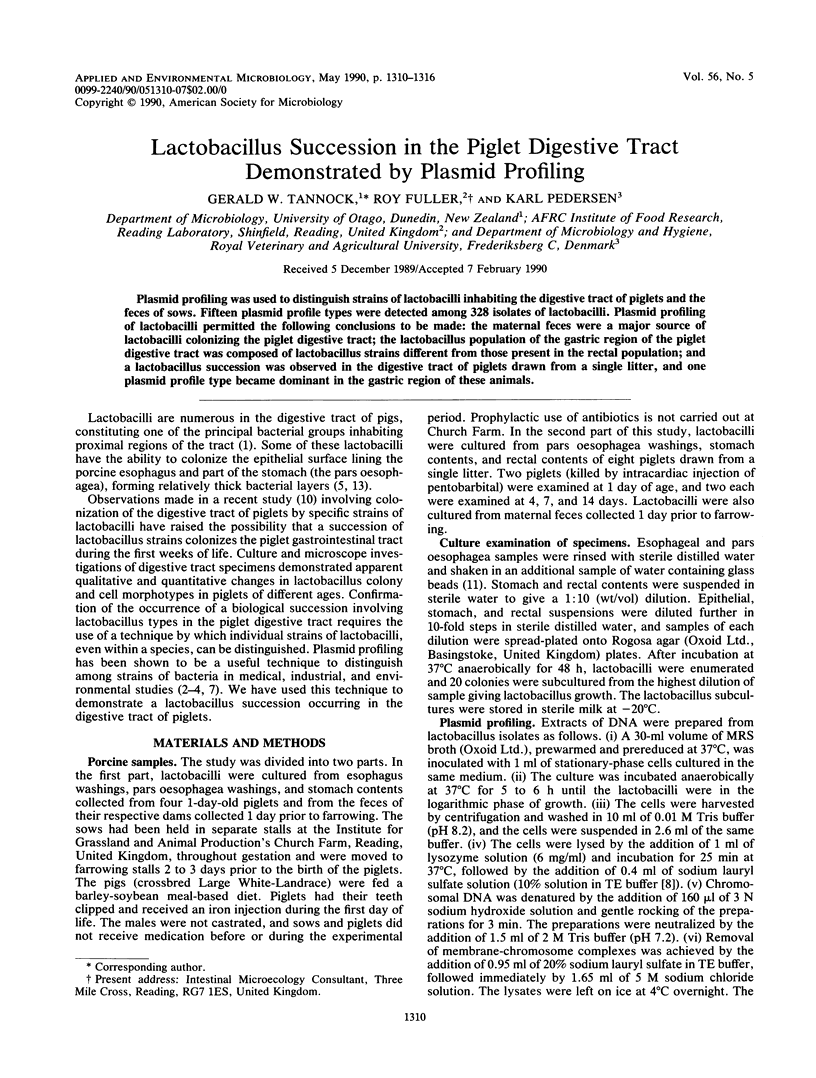

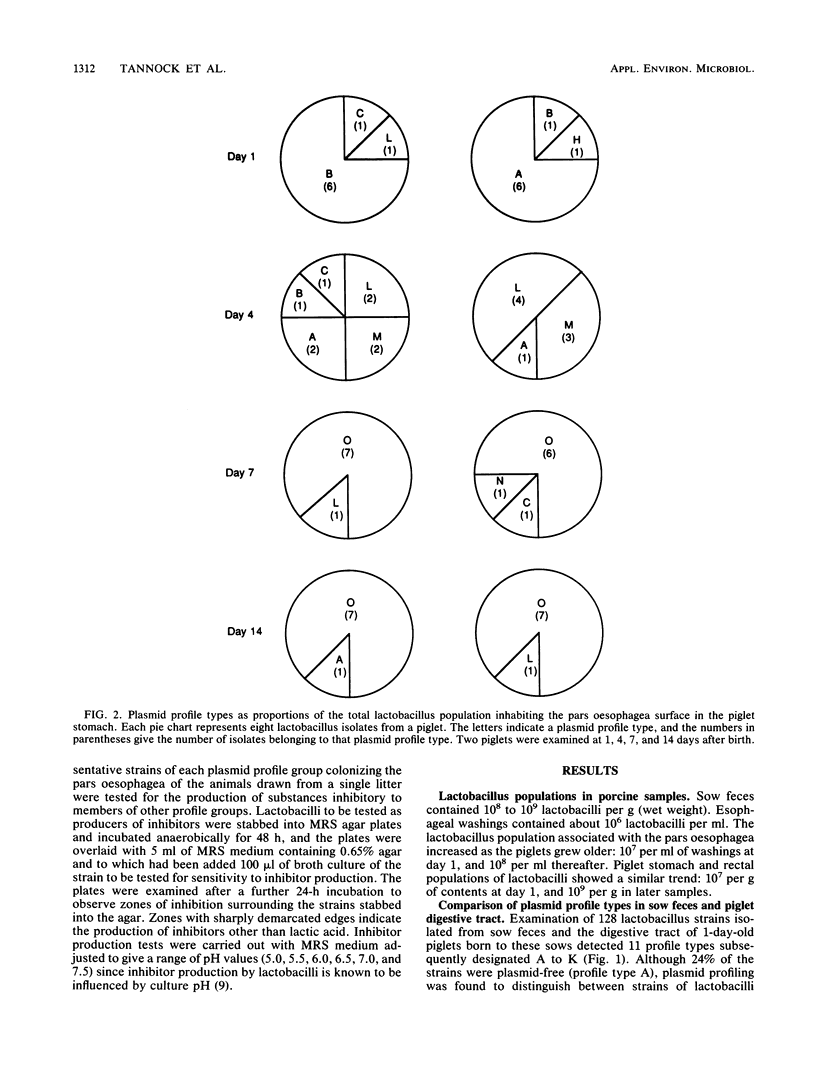
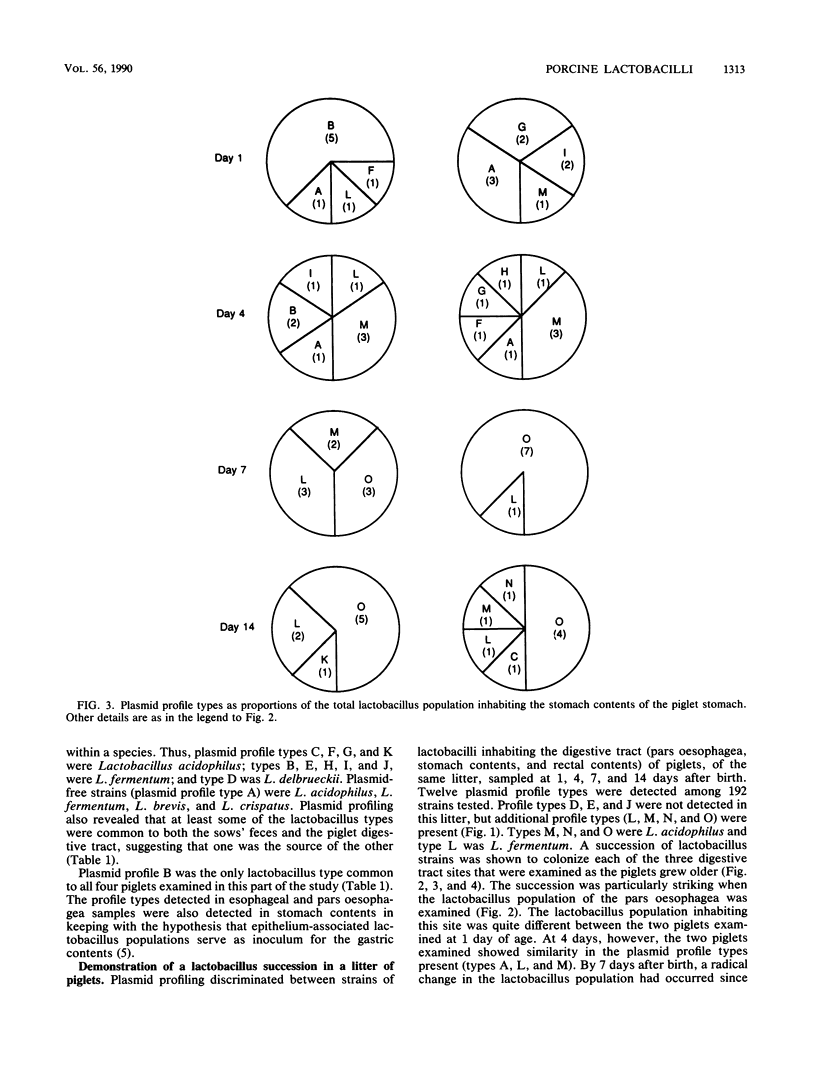
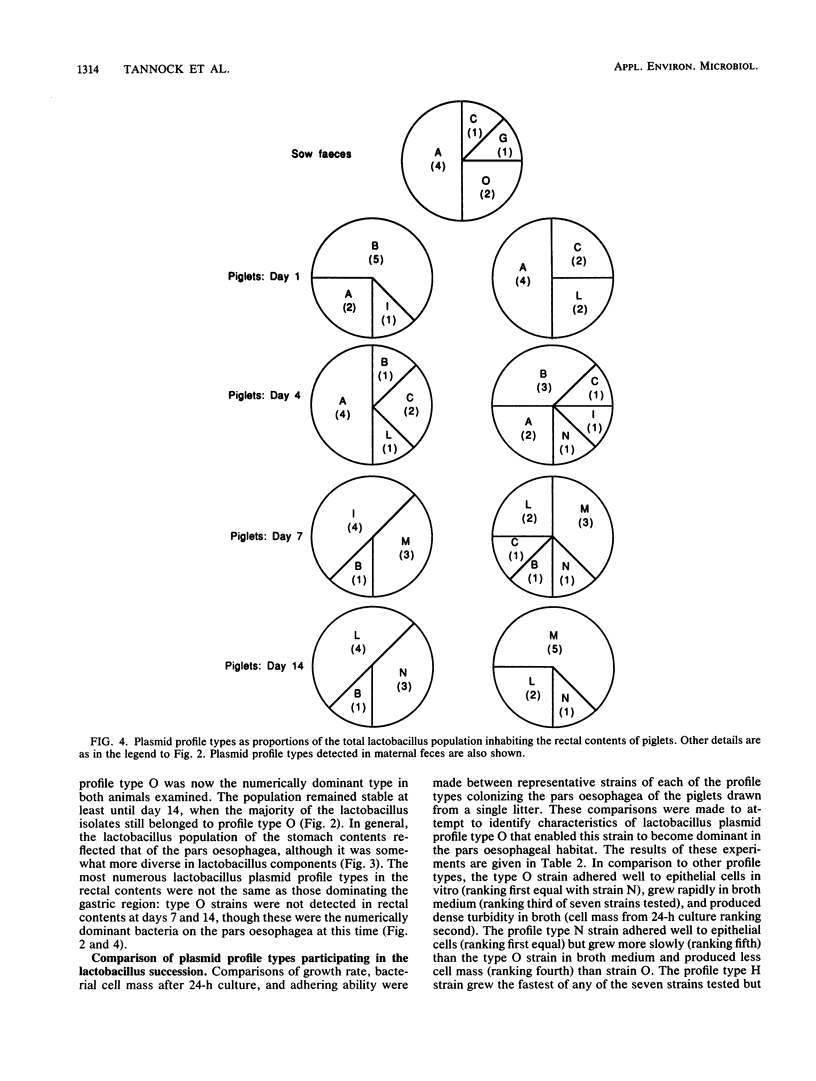
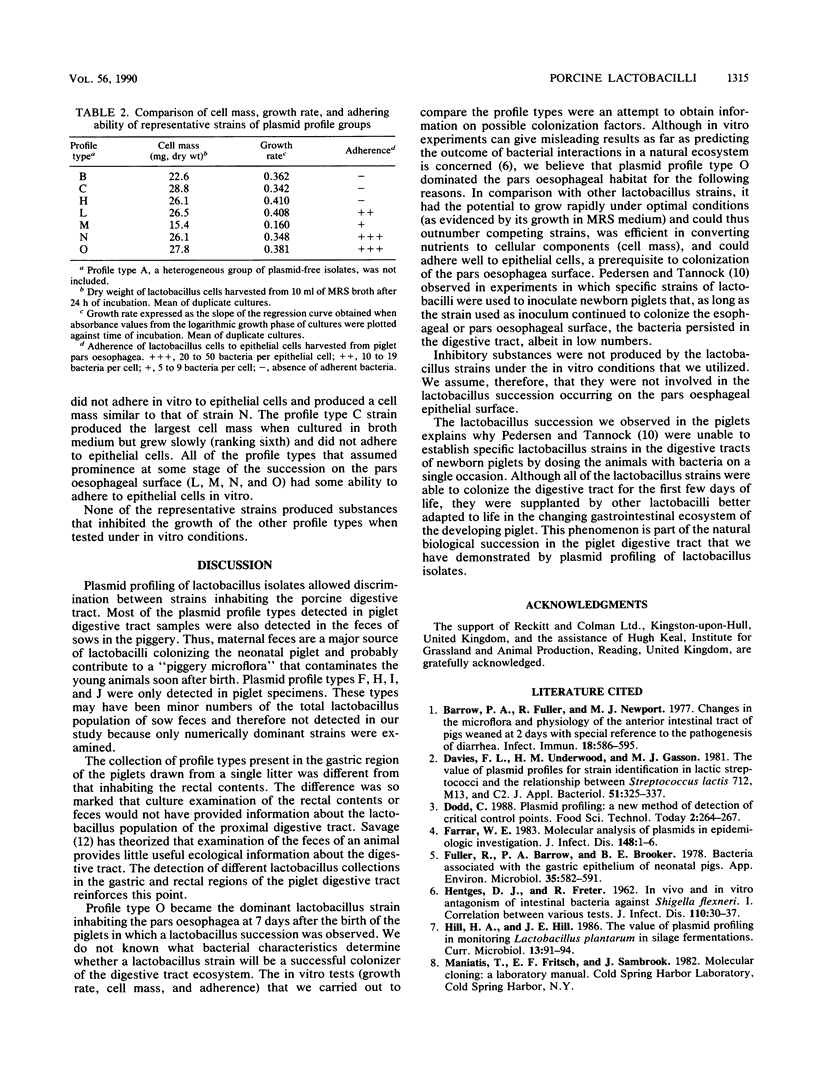

Images in this article
Selected References
These references are in PubMed. This may not be the complete list of references from this article.
- Barrow P. A., Fuller R., Newport M. J. Changes in the microflora and physiology of the anterior intestinal tract of pigs weaned at 2 days, with special reference to the pathogenesis of diarrhea. Infect Immun. 1977 Dec;18(3):586–595. doi: 10.1128/iai.18.3.586-595.1977. [DOI] [PMC free article] [PubMed] [Google Scholar]
- Farrar W. E., Jr Molecular analysis of plasmids in epidemiologic investigation. J Infect Dis. 1983 Jul;148(1):1–6. doi: 10.1093/infdis/148.1.1. [DOI] [PubMed] [Google Scholar]
- Fuller R., Barrow P. A., Brooker B. E. Bacteria associated with the gastric epithelium of neonatal pigs. Appl Environ Microbiol. 1978 Mar;35(3):582–591. doi: 10.1128/aem.35.3.582-591.1978. [DOI] [PMC free article] [PubMed] [Google Scholar]
- HENTGES D. J., FRETER R. In vivo and in vitro antagonism of intestinal bacteria against Shigella flexneri. I. Correlation between various tests. J Infect Dis. 1962 Jan-Feb;110:30–37. doi: 10.1093/infdis/110.1.30. [DOI] [PubMed] [Google Scholar]
- Muriana P. M., Klaenhammer T. R. Conjugal Transfer of Plasmid-Encoded Determinants for Bacteriocin Production and Immunity in Lactobacillus acidophilus 88. Appl Environ Microbiol. 1987 Mar;53(3):553–560. doi: 10.1128/aem.53.3.553-560.1987. [DOI] [PMC free article] [PubMed] [Google Scholar]
- Pedersen K., Tannock G. W. Colonization of the porcine gastrointestinal tract by lactobacilli. Appl Environ Microbiol. 1989 Feb;55(2):279–283. doi: 10.1128/aem.55.2.279-283.1989. [DOI] [PMC free article] [PubMed] [Google Scholar]
- Roach S., Savage D. C., Tannock G. W. Lactobacilli isolated from the stomach of conventional mice. Appl Environ Microbiol. 1977 May;33(5):1197–1203. doi: 10.1128/aem.33.5.1197-1203.1977. [DOI] [PMC free article] [PubMed] [Google Scholar]
- Savage D. C. Microbial ecology of the gastrointestinal tract. Annu Rev Microbiol. 1977;31:107–133. doi: 10.1146/annurev.mi.31.100177.000543. [DOI] [PubMed] [Google Scholar]



